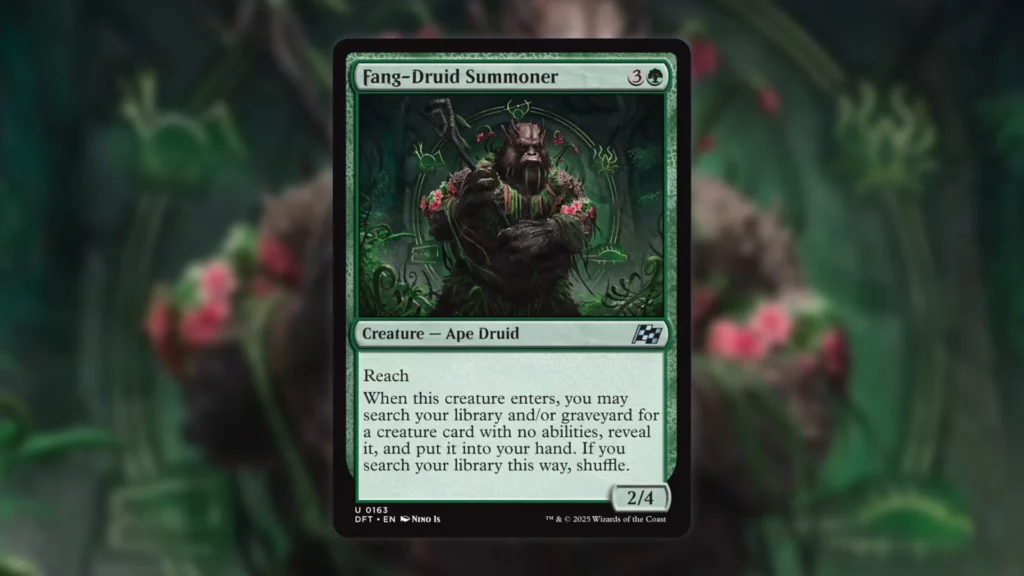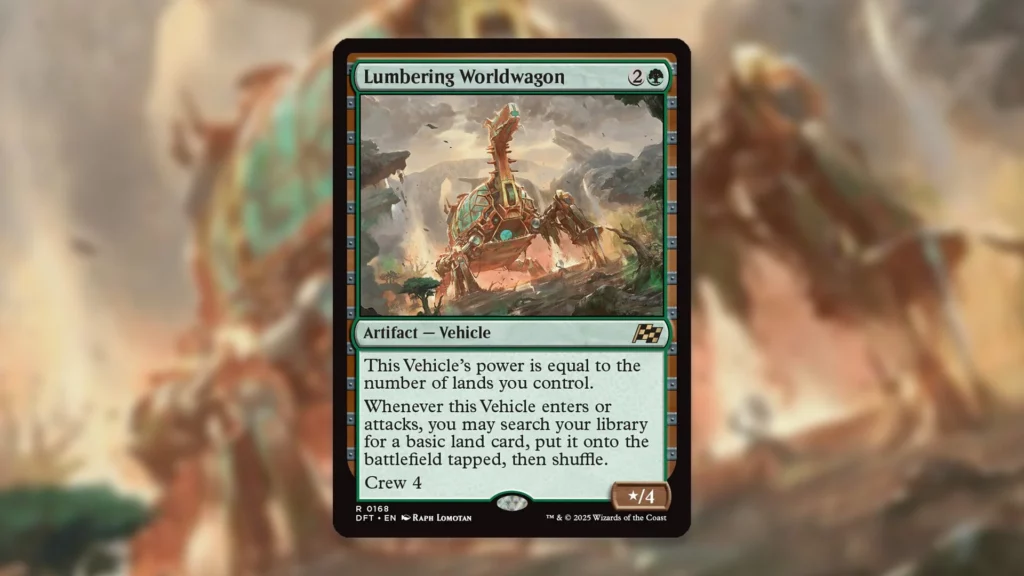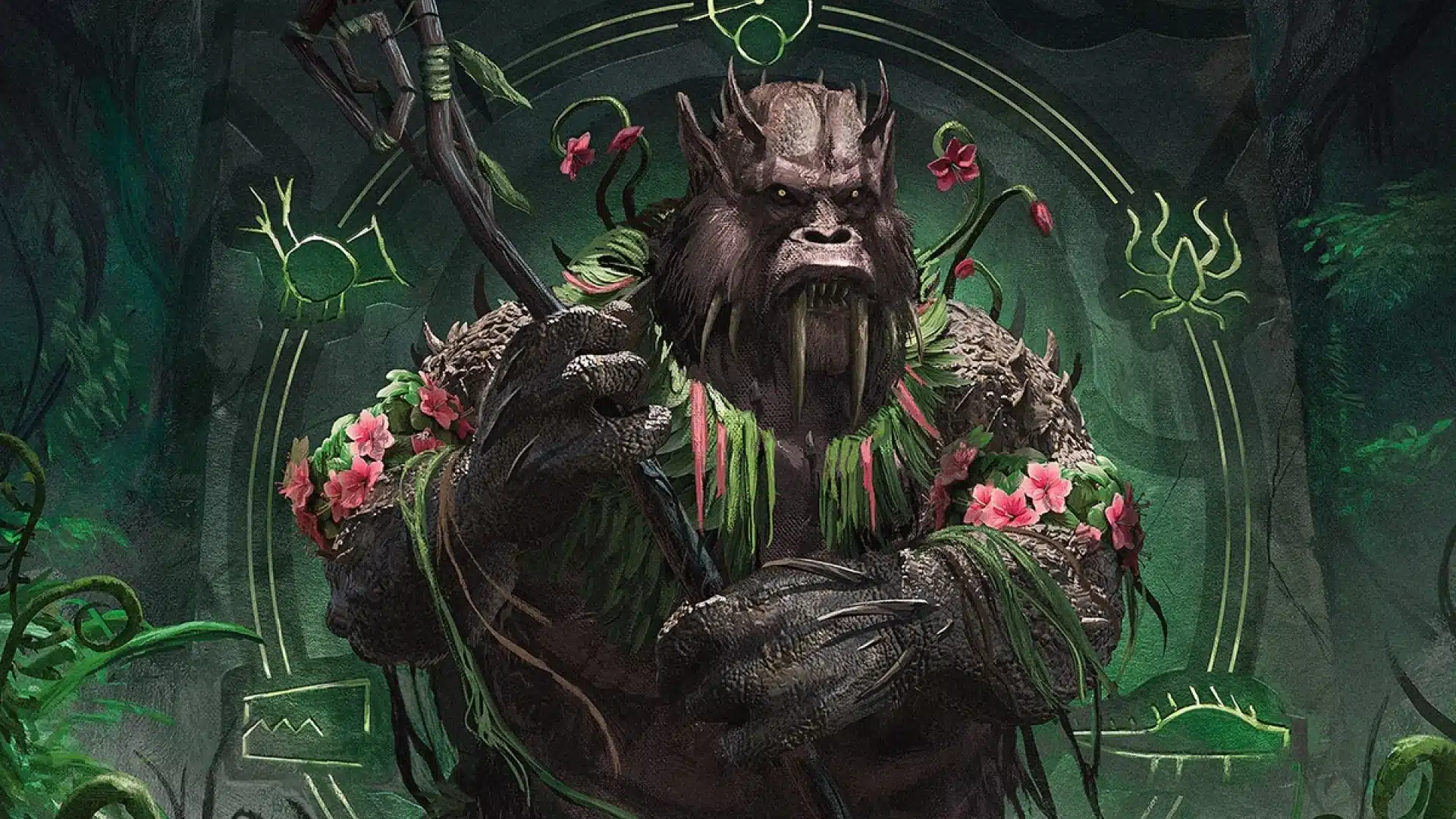As more and more Aetherdrift cards were getting revealed during spoiler season, we were starting to fear that the Aetherdrift Draft environment would be rather lopsided and uninteresting. After all, mechanics like max speed that incentivize continuously dealing damage have the potential to lead to a blazing-fast format that punishes stumbling. Little did we know that the format would be completely unbalanced in the opposite direction.
To put it lightly, green midrange decks are insane in this format. MTG head designer Mark Rosewater made it clear last year that he was working to improve green’s position in modern-day Limited. Yet, it’s possible this set went too far, as green decks continue to dominate.
Color Imbalance Data

To help us fully grasp just how incredible green is in Aetherdrift Draft, we can analyze the win rates of various green archetypes on 17lands.com. For those unfamiliar, 17lands.com is a site that tracks user draft data on MTG Arena and gives us a sense of what cards and colors are performing the best. Based on early deck color data, all other colors get stronger when paired with green.
The best-performing two-color decks in Aetherdrift are Golgari and Simic by a big margin, posing win rates of 59.5% and 59.3%, respectively. At the bottom of the two-color barrel, we have Boros, which only sits at 52.3%. This alone suggests that red and white are the weakest colors. While this is true to an extent, Gruul and Selesnya are the color pairs with the third and fourth-highest win rates.
This not only showcases how good the green cards are but also reveals that the multi-color green cards are well worth maximizing. In fact, the two uncommons with the highest win rates, when main-decked, are Thundering Broodwagon and Skyserpent Seeker, which fit the bill. From there, following a handful of mono-green cards, Veteran Beastrider and Broodhart Engine are also excellent uncommons worth picking highly.
It isn’t until we reach the uncommon with the 13th-highest win rate when maindecked that we see a non-green card. A similar trend can be seen when looking at the commons. The top 10 commons feature eight green cards as well as Jungle Hollow and Thornwood Falls. These lands make it easier to stay heavy green while simply splashing a second color.
Currently, Mono-green with a splash is actually the best-performing archetype in Aetherdrift with a win rate of almost 61%. This is absolutely incredible. Obviously, having such a deep pool of commons and uncommons to work with plays a role in making green so elite, but there’s more to the story.
An Interesting Development

Over the past couple years, Golgari and Simic have been amongst the worst-performing color pairs in most sets. This is partially because of how fast modern-day Limited games tend to play out. Golgari decks are often thematically built around strategies like self-mill, reanimation, and beefy threats.
As cool as this is, setting things up takes time, which is often lacking versus fast draws from red and white decks. Simic takes this to the extreme, as the color combination generally lacks good early removal. Playing burly creatures and hoping they stabilize the board isn’t always effective versus decks that do a better job curving out.
Aetherdrift, however, is an anomaly in this regard for a couple of reasons. First and foremost, the speed of the format is slower than we were used to in 2024. The average number of turns played in Aetherdrift Premier Draft games is about 9.1. This is higher than Murders at Karlov Manor, Outlaws of Thunder Junction, Bloomburrow, and Duskmourn.
Boros being such a weak color pair partly contributes to the format being slower. When the best beatdown color pair performs poorly and the games last longer, it’s much easier to take the time to deploy your threats.
This brings us to the second reason green is so strong in Aetherdrift: there is no shortage of things to do with your mana and ways to generate value. Many of the top performing green commons and uncommons, like Stampeding Scurryfoot, have Exhaust. Once you stabilize, Exhaust abilities provide a mana sink to pull you further ahead.
If you wanted any sign that Aetherdrift is a slightly slower format, just look at Fang-Druid Summoner’s win rate. Fang-Druid Summoner is the mono-colored uncommon with the highest win rate while maindecked. By itself, it’s a 2/4 with Trample for four mana. That’s it. This is very poor on rate and in many formats, wouldn’t cut it.
In Aetherdrift, though, it’s just big enough to provide some defense while you go and tutor up cards like Terrian, World Tyrant to cast on the following turn. Terrian doesn’t have any relevant abilities, yet it’s the fifth-best uncommon when maindecked in the whole set! Big creatures rule the day in Aetherdrift, which is not something we predicted.
Where Do We Go From Here?

The reality is, that this is one of the most skewed formats we’ve seen in recent memory. We’re only a week or so in, and things already look grim.
The hope is that the format is self-correcting to an extent. As so many players start to flock to green in the same draft pod, they’ll be fighting for the same resources. This means that the other players may be able to get elite cards in other colors later than expected.
Even still, green is so deep at common and uncommon that it can support a lot of drafters. For instance, the difference between picking up the top green common (Stampeding Scurryfoot) and the seventh best common (Beastrider Vanguard) is pretty minimal.
Chances are, you’re better off taking a lower-end green common than a top-end white common like Ride’s End (whose win rate is a full 2.8% less than Beastrider Vanguard, believe it or not) if your goal is to win. This doesn’t even take into account the vast array of elite green rares and mythic rares ranging from Lumbering Worldwagon to Agonasaur Rex that are insane on rate.
Aetherdrift draft can still be fun, and frankly, it’s nice to see green in the Limited spotlight for once. Nonetheless, the color imbalance in the set is a real problem. We’ll just have to wait and see if the format improves in the coming weeks.

